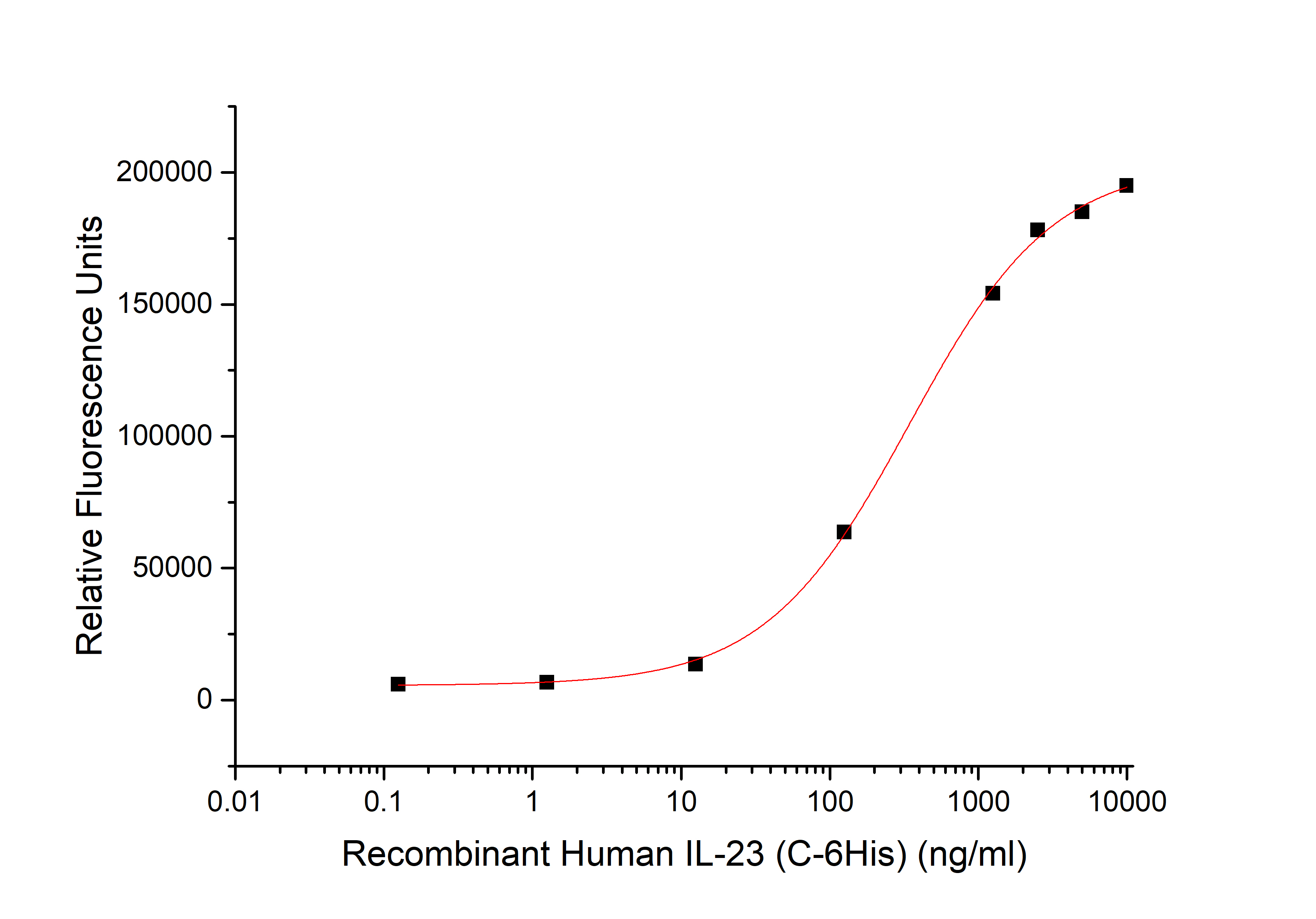Measured by its ability to induce STAT reporter activity in 293F human embryonic kidney cells. The ED50 for this effect is 300-900 ng/ml.
Product Details
Product Details
Product Specification
| Species | Human |
| Synonyms | SGRF; IL-23p19; CLMF p40; IL-12 subunit p40; NKSF2 |
| Accession | P29460、Q9NPF7 |
| Amino Acid Sequence |
Ile23-Ser328&Arg20-Pro189, with the C-terminus His Tag |
| Expression System | HEK293 |
| Molecular Weight |
60-90 KDa, reducing conditions |
| Purity | >95% by SDS-PAGE |
| Endotoxin | <0.1EU/μg |
| Conjugation | Unconjugated |
| Tag | His Tag |
| Physical Appearance | Lyophilized Powder |
| Storage Buffer | 20 mM Tris-HCl, 15% Trehalose, 0.05% Tween80, pH8.5 |
| Reconstitution |
|
| Stability & Storage |
|
Background
Interleukin 23 (IL-23) is a heterodimeric cytokine composed of two disulfide-linked subunits, a p19 subunit that is unique to IL-23, and a p40 subunit that is shared with IL-12. The p19 subunit has homology to the p35 subunit of IL-12, as well as to other single chain cytokines such as IL-6 and IL-11. The p40 subunit is homologous to the extracellular domains of the hematopoietic cytokine receptors. Although p19 is expressed by activated macrophages, dendritic cells, T cells, and endothelial cells, only activated macrophages and dendritic cells express p40 concurrently to produce IL-23. IL-23 has biological activities that are similar to, but distinct from IL-12. Both IL-12 and IL-23 induce proliferation and IFN-gamma production by human T cells. While IL-12 acts on both naive and memory human T cells, the effects of IL-23 is restricted to memory T cells.
Picture
Picture
Bioactivity



